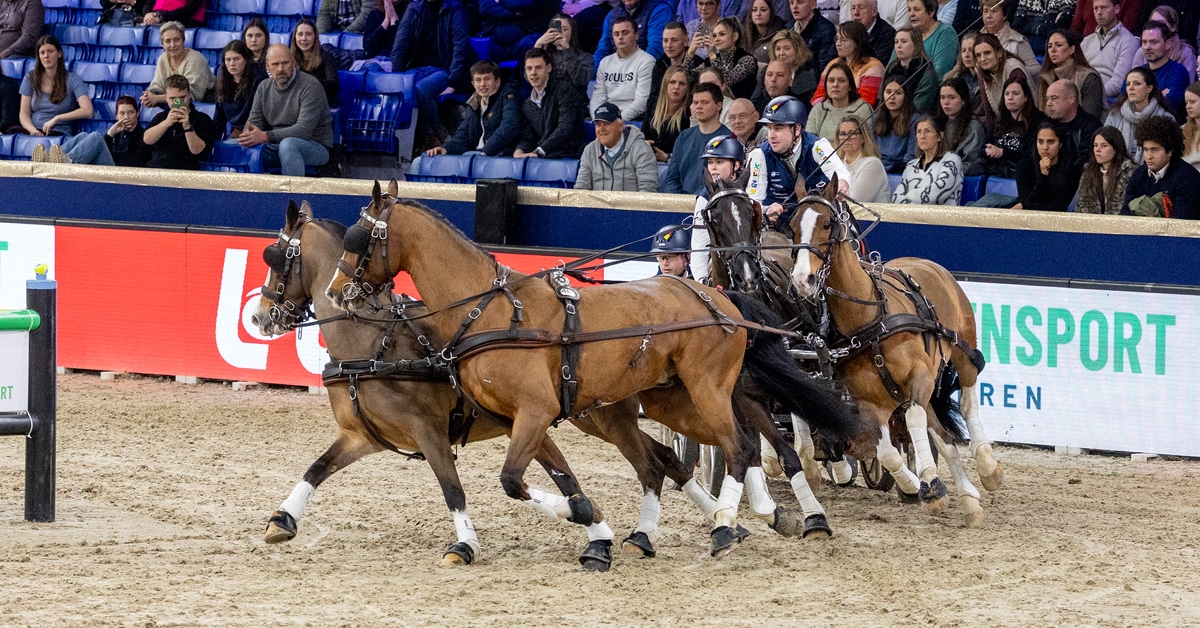Dr. Adrian Harrison, associate professor of Biomechanics & Rehabilitation in the department of Veterinary and Animal Sciences at the University of Copenhagen, had a paper published on June 26th in the Open Journal of Veterinary Medicine which sought to find a simpler way to measure noseband pressure. Dr. Harrison found that scientific procedures for addressing noseband fit and excessive tightness causing pain, as well as quantitative pressure measurements under the noseband while the horse is being ridden, were either scarce or seriously lacking. He also noted that the FEI’s process of approving bridles is not currently based on quantitative measurements, and writes that a query yielded this answer from an FEI spokesperson: “The FEI does not hold a certification process for individual pieces of equipment [..]..in other words, there is no mechanism where a manufacturer [.. ] would be able to submit a piece of tack and/or equipment for review by a panel, and get a “stamp of approval” by the FEI ”. Instead, the FEI “..merely interprets the applicable FEI Rules and Regulations when it comes to individual tack and equipment ” and reaches a decision that is not grounded in scientific quantifiable measurements.

(From top left) The ISES taper gauge in use, which ensures a distance of at least 1.5 cm between the noseband and the Planum nasale. Bridle A with an anatomical noseband; Bridle B with a crank-type noseband; Bridle C with an anatomical noseband; Bridle D with an English noseband; and Bridle E with an anatomical noseband. Bridles A, B, C and E are all FEI-approved, bridle D is not.
The author cites one international study which found significant difference in the tightness of the noseband within different FEI competition disciplines, where only 7% were found to meet the ‘two-finger’ FEI standard, equivalent to 1.5 cm, while 44% were found to be tightened to ‘0 fingers’. “Such findings indicate a clear need for a better protocol for the control of equipment during FEI competitions, especially noseband tightness,” Dr. Harrison remarks in his paper. “The obligate use of a noseband within the FEI regimen combined with the desire for aesthetic riding (e.g. neck frame, closed mouth), has over the past decade been of increasing academic concern, as the noseband can inhibit and restrict oral behaviour and jaw movements that potentially masks symptoms of conflict behaviour in the horse.” Dr. Harrison found the lack of scientific quantifiable assessment of noseband fit and comfort by the FEI surprising, since horse welfare in general and the fit of tack to avoid pain and injury is part of their policy and code of conduct.
The hypotheses tested in this study included a) Fujifilm linear thin film pressure sensors in connection with specialized pressure CURO units form a quantifiable means of monitoring pressure under the noseband of horses during exercise; and b) FEI-approved bridles exert less pressure under the noseband than one that has been recently banned by the FEI.
In Dr. Harrison’s study, seven horses were fitted by professional bit and bridle fitters with five different bridles (A-E, see Figure 1). Pressure distribution and intensity were measured using colour-sensitive Fujifilm (two strips taped into the noseband) and a CURO sensor system designed to detect and record pressure waves from tissue. Nosebands were tightened to 1.5 cm as measured on the mid-plane of the bridge of using an ISES taper gauge. Measurements were made while the horses were at rest, during a period of walk and collected gait (tölt), as well as during a full stop and backing up.
This study revealed that the linear thin film pressure sensors provided a quick, easy, non-invasive yet reliable, precise, and quantifiable measure of pressure under the noseband of horses during periods of physical activity as well as at rest. Interestingly, it was demonstrated that the four FEI-approved bridles used in the study did not offer less pressure under the noseband than the one recently banned by the FEI.
Results also indicated that pressures under nosebands can reach levels that appear capable of inflicting tissue damage. The researcher advises that bridles and nosebands should be assessed using scientific methodology and not based on arbitrary and subjective criteria, as is currently the case.
You can read the entire research paper here.
More News











